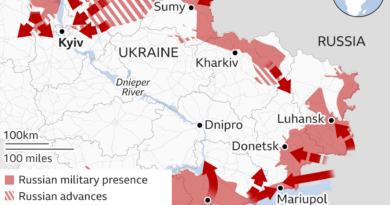High-Level Synthesis Propels Next-Gen AI Accelerators
Everything around you is getting smarter. Artificial intelligence is not just a data center application but will be deployed in all kinds of embedded systems that we interact with daily. We expect to talk to and gesture at them. We expect them to recognize and understand us. And we expect them to operate with just a little bit of common sense. This intelligence is making these systems not just more functional and easier to use, but safer and more secure as well.
All this intelligence comes from advances in deep neural networks. One of the key challenges of neural networks is their computational complexity. Small neural networks can take millions of multiply accumulate operations (MACs) to produce a result. Larger ones can take billions. Large language models, and similarly complex networks, can take trillions. This level of computation is beyond what can be delivered by embedded processors.
In some cases, the computation of these inferences can be off-loaded over a network to a data center. Increasingly, devices have fast and reliable network connections – making this a viable option for many systems. However, there are also a lot of systems that have hard real time requirements that cannot be met by even the fastest and most reliable networks. For example, any system that has autonomous mobility – self-driving cars or self-piloted drones – needs to make decisions faster than could be done through an off-site data center. There are also systems where sensitive data is being processed that should not be sent over networks. And anything that goes over a network introduces an additional attack surface for hackers. For all of these reasons – performance, privacy, and security – some inferencing will need to be done on embedded systems.
For very simple networks, embedded CPUs can handle the task. Even a Raspberry Pi can deploy a simple object recognition algorithm. For more complex tasks there are embedded GPUs, as well as neural processing units (NPUs) targeted at embedded systems that can deliver greater computational capability. But for the highest levels of performance and efficiency, building a bespoke AI (Artificial Intelligence) accelerator can enable applications that would otherwise be impractical.
Engineering a new piece of hardware is a daunting undertaking, whether for ASIC or FPGA. But it enables developers to reach a level of performance and efficiency not possible with off-the-shelf components. But how can the average development team build a better machine learning accelerator than the designers creating the most leading-edge commercial AI accelerators, with multiple generations under their belt? By highly customizing the implementation to the specific inference being performed, the implementation can be an order of magnitude better than more generalized solutions.
When a general-purpose AI accelerator developer creates an NPU, their goal is to support any neural network that anyone might conceive. They want to get thousands of design ins, so they have to make the design as general as possible. Not only that, but they also aim to have some level of “future proofing” built into their designs. They want to be able to support any network that might be imagined for several years into the future. Not an easy task in a technology that is evolving so rapidly.
A bespoke accelerator needs to only support the one, or perhaps several, networks to be used. This freedom allows many programmable elements in the implementation of the accelerator to be fixed in hardware. This creates hardware that is both smaller and faster than something general purpose. For example, a dedicated convolution accelerator, with a fixed image and filter size, can be up to 10 times faster than a well-designed general purpose TPU.
General purpose accelerators usually use floating point numbers. This is because virtually all neural networks are developed in Python on general purpose computers using floating point numbers. To ensure correct support of those neural networks, the accelerator must, of course, support floating point numbers. However, most neural networks use numbers close to 0, and require a lot of precision there. And floating-point multipliers are huge. If they are not needed, omitting them from the design saves a lot of area and power.
Some NPUs support integer representation, and sometimes with a variety of sizes. But supporting multiple numeric representation formats adds circuitry, which consumes power and adds propagation delays. Choosing one representation and using that exclusively enables a smaller faster implementation.
When building a bespoke accelerator, one is not limited to 8 bits or 16 bits, any size can be used. Picking the correct numeric representation, or “quantizing” a neural network, allows the data and the operators to be optimally sized. Quantization can significantly reduce the data needed to be stored, moved, and operated on. Reducing the memory footprint for the weight database and shrinking the multipliers can really improve the area and power of a design. For example, a 10-bit fixed-point multiplier is about 20 times smaller than a 32-bit floating-point multiplier, and, correspondingly, will use about 1/20th the power. This means the design can either be much smaller and energy efficient by using the smaller multiplier, or the designer can opt to use the area and deploy 20 multipliers that can operate in parallel, producing much higher performance using the same resources.
One of the key challenges in building a bespoke machine learning accelerator is that the data scientists who created the neural network usually do not understand hardware design, and the hardware designers do not understand data science. In a traditional design flow, they would use “meetings” and “specifications” to transfer knowledge and share ideas. But, honestly, no one likes meetings or specifications. And they are not particularly good at effecting an information exchange.
High-Level Synthesis (HLS) allows an implementation produced by the data scientists to be used, not just as an executable reference, but as a machine-readable input to the hardware design process. This eliminates the manual reinterpretation of the algorithm in the design flow, which is slow and extremely error prone. HLS synthesizes an RTL implementation from an algorithmic description. Usually, the algorithm is described in C++ or SystemC, but a number of design flows like HLS4ML are enabling HLS tools to take neural network descriptions directly from machine learning frameworks.
HLS enables a practical exploration of quantization in a way that is not yet practical in machine learning frameworks. To fully understand the impact of quantization requires a bit accurate implementation of the algorithm, including the characterization of the effects of overflow, saturation, and rounding. Today this in only practical in hardware description languages (HDLs) or HLS bit accurate data types (https://hlslibs.org).
As machine learning becomes ubiquitous, more embedded systems will need to deploy inferencing accelerators. HLS is a practical and proven way to create bespoke accelerators, optimized for a very specific application, that deliver higher performance and efficiency than general purpose NPUs.
For more information on this topic, read the paper: High-Level Synthesis Enables the Next Generation of Edge AI Accelerators.
Russell Klein
Russell Klein is a program director at Siemens EDA’s High-Level Synthesis Division focused on processor platforms. He holds a number of patents for EDA tools in the area of SoC design and verification. Klein has more than 20 years of experience developing design and debug solutions, which span the boundary between hardware and software. He has held various engineering and management positions at several EDA companies.


